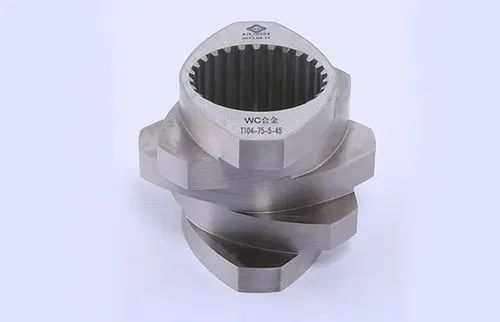01 Name meaning
First, take the naming of one of the threaded components as an example. We usually see that, for example, a threaded component is written like this, what does it mean by 30 degrees/7/64? The first 30 degrees refers to it The angle between the cut pieces is 30 degrees. The second 7 means that there are a total of 7 pieces in this cut piece, 7 cut pieces, and the last 64 means the total length of the threaded element. It is 64.

02 Angle difference
In the second aspect, we usually see the cutting angle in the 65 machine, for example, there are 30 degrees, 45 degrees, 60 degrees, reverse 45 degrees, and 90 degrees, so what is the difference,usually degrees The larger the value, the worse the passability of the material inside, and the greater the shear heat generated by the shear force. When the degree is large, the plasticization of the material and the shear dispersion of the glass fiber , it is helpful for the dispersion of inorganic fillers. Of course, for some heat-sensitive plastics or materials that are more sensitive to heat, it is obviously inappropriate to use such a shear block with a large angle.
03 Forward and reverse
In the third aspect, we also mentioned forward and reverse in the cutout block. It also has an Lbehind
the letter, for example, 45 degrees. There are forward and reverse, and the forward direction is usually It is consistent with the conveying screw element, so its passability will be better, and the reverse is opposite to the conveying method of the conveying thread element material, so it will locally generate more resistance in this place, and it will generate more resistance in this place. The shear resistance will also be greater, so it is helpful for the dispersion of the material. Of course, it should also pay attentionto its shear heat.
04 angle and thickness
Fourth, the same angle also has a different length, for example, 5 pieces at 45 degrees and a length of 56, and 5 pieces at 45 degrees and a length of 44. Obviously, the thickness of the single piece is different. When the angle is the same and the thickness is different, the thicker the thickness, the worse the passability of the material, and the greater the shear generated inside, so we have to treat it separately. To sum up, for the shear In the case of a certain thickness, we usually have the largest shear at 90 degrees, followed by the reverse 45 degrees, followed by 60 degrees, followed by 45 degrees, and the weakest shear is 30 degrees.











